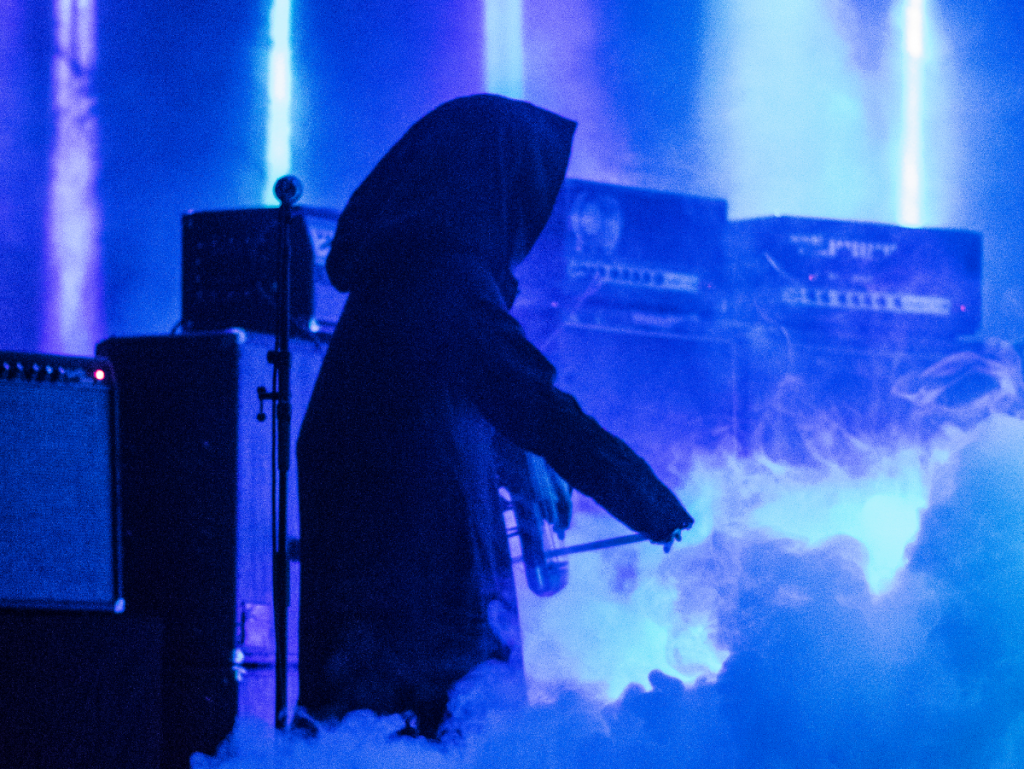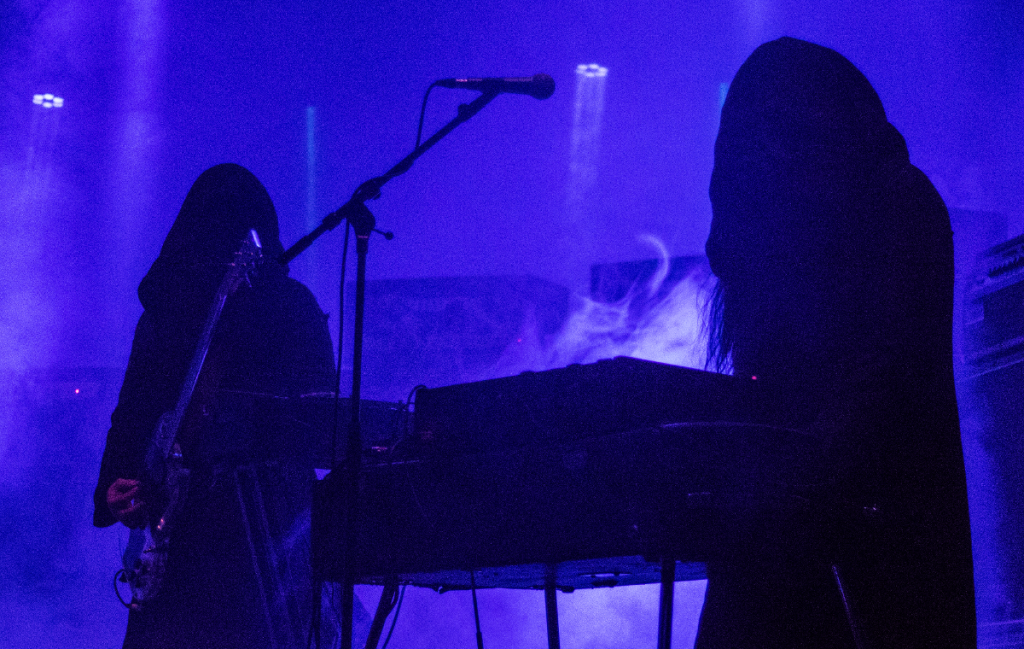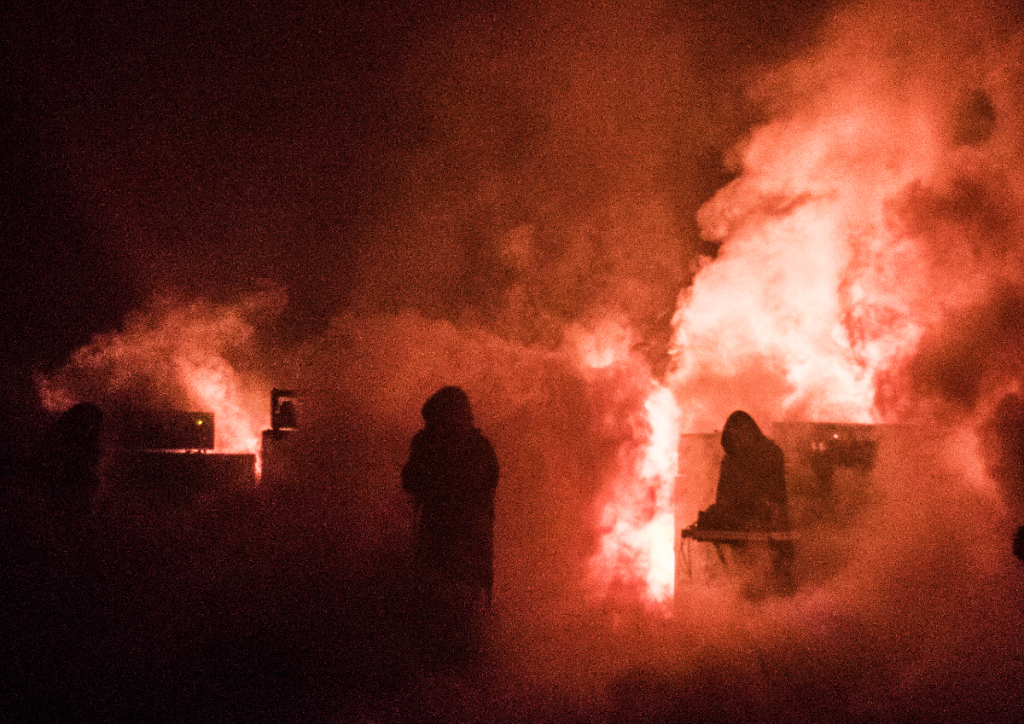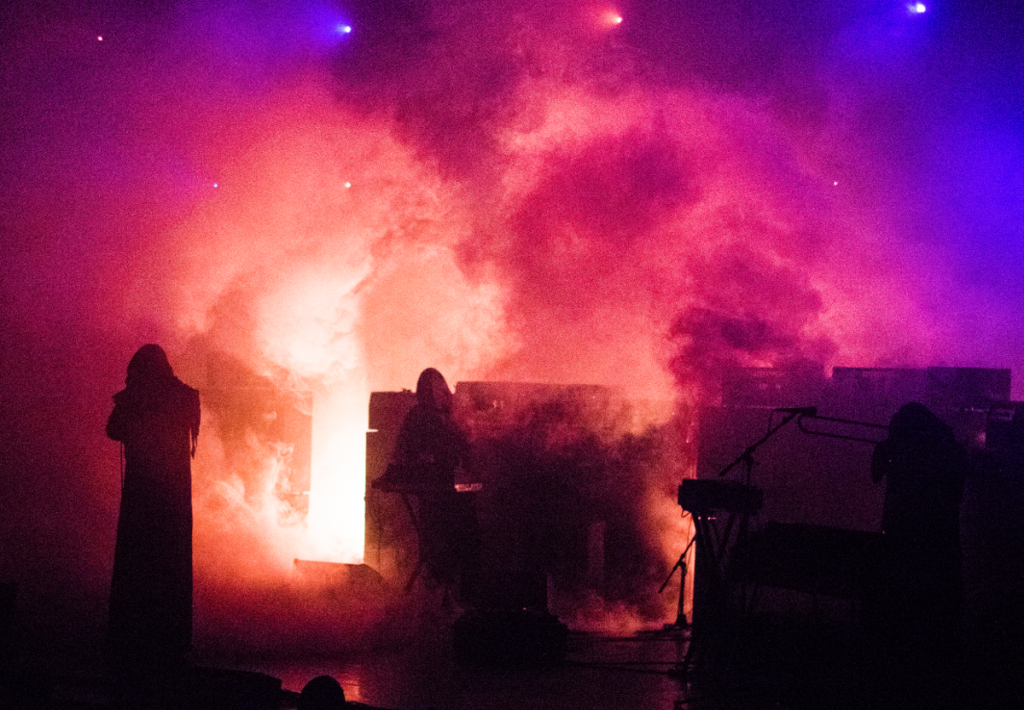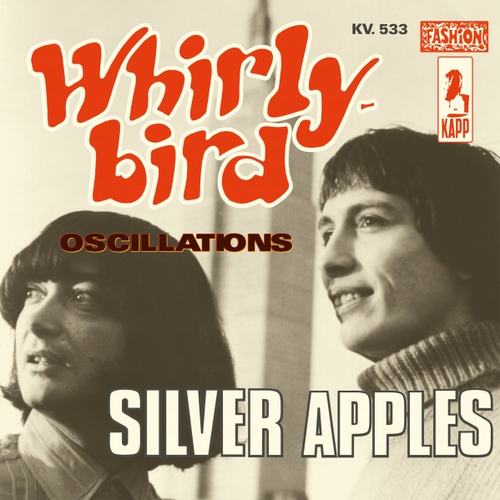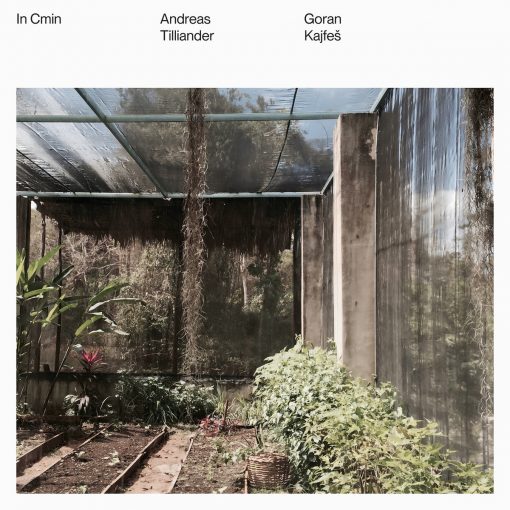The Barbican, London
21 March 2017
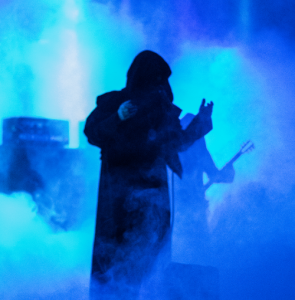 The tickets. We purchased them, they came. Who are they? Explorers in the further reaches of experience — demons to some, angels to others. We bought the tickets, they came. Now we must come with them and taste their pleasures.
The tickets. We purchased them, they came. Who are they? Explorers in the further reaches of experience — demons to some, angels to others. We bought the tickets, they came. Now we must come with them and taste their pleasures.
In his principal work, Observations On Man, His Frame, His Duty, And His Expectations, (published in 1749), English philosopher David Hartley (founder of the Associationist school of psychology), expounded his “doctrine of vibrations” which “seems to require, that each pain should differ from the corresponding and opposite pleasure, not in kind, but in degree only; ie that pain should be nothing more than pleasure itself, carried beyond a due limit.” In essence, Hartley’s view was that a pleasurable sensation becomes painful when it exceeds its “due limit”. This in turn suggests that the boundary between pleasure and pain is determined by a physiological event.
I think it’s safe to say that what we have on our hands here this evening is a physiological event.
As befitting such a ritual, Clive and I prepare ourselves beforehand with small libations: water is fetched from a freshly flowing spring, cauldrons which stand in the sanctuary are garlanded with wool and filled with water and honey, several vessels of Stiegl Goldbrau are emptied. With a silent prayer we depart, not looking back.1
On entering the temple, we are handed our vestments, each of us receiving a small plastic sachet containing the two orange earplugs2 which will allow us to survive unscathed this communion with the (sound) Almighty. Whilst settling in to our respective seats, the woman next to us relates that on leaving her previous live SunnO))) experience, she had been appalled by the terrible state of her own dandruff, only to realise that was she was in fact seeing were small flecks of plaster dislodged from the ceiling by the sheer sonic force of the event. I check the pocket of my waistcoat, fingering the little plastic sachet like a string of prayer beads and drawing comfort from its touch. First to take the stage, though, is Icelandic singer and cellist Hildur Guðnadóttir. In most circumstances, the words “Icelandic singer and cellist” would doubtless betoken soothing ambient soundscapes shimmering with the calm crystal purity of the Jökulsárlón ice lagoon. Guðnadóttir, however, has something considerably more visceral on her mind and, as her work with a roster that includes Throbbing Gristle and Pan Sonic attests, it ain’t anything soothing and ambient.Attacking her instrument like a Nordic, elfin Keith Rowe, Guðnadóttir wrings from it a thirty-five-minute set that modulates between delicate microtones and savage bottom end that several times actually has the light fittings in the hall vibrating madly in sympathetic resonance. That’s pretty flaming impressive for a cello. Her voice is imposing too, used sparingly to counterpoint the instrument. I gradually fall just below consciousness into a swaying mediation, at just the right level to banish all quotidian thoughts and allow proper right hand path3 merger into the music. When Guðnadóttir finally takes a modest bow and leaves the stage in her patterned pantsuit, I think a small portion of my heart has possibly been stolen away.
Regaining conscious thought during the interval, I have just enough time to centre myself and consume a handful of Orange and Lime Tic Tacs (it seems a more than faintly ludicrous thing, eating Tic Tacs before seeing SunnO))))4 . I survey the backline that sits humming softly before us, and count twenty-seven amplifiers. Then, before the sweetness has even faded from my taste buds, the lights go gently down and, with a quiet hiss, a jet of smoke billows vertically upwards into the light. After a beat, on strides the magnificent figure of Attila Csihar, hooded, imposing, like the photograph of the fully cloaked Aleister Crowley making the Sign of Harpocrates. However, it’s certainly not silence that Csihar is presaging, and immediately he begins his dark benediction, an utterly compelling mixture of chant and polyphonic throat singing. It’s almost impossible for the mind not to flood instantly with Kenneth Anger imagery, Csihar leading this invocation of our demon brother, and someone later confides in me that at this point they were actually starting to become afraid.At the ritual climax of the 1968 film of Dennis Wheatley‘s The Devil Rides Out, when the Goat of Mendes appears, a smiling Charles Gray instructs a petrified looking Patrick Mower, “Kneel and face your master.” There is nothing so verbally explicit here, but we have nevertheless been prepared to receive, and when SunnO))) appear, the effect, like materialisation of Baphomet, feels no less apocalyptic. Huge clouds of smoke are by now wafting out into the auditorium, backlit with orange light so that the entire stage looks as if it is on fire.
And so the liturgy begins.
With a roar of dissonant chords and beat notes so intense that my clothing begins to vibrate around me, SunnO))) fill the consciousness with sound. This is not really a “gig”, these are not really “songs”, it is a sonic sacrament into which we all are entering. Like several of their illustrious predecessors — famously Swans and My Bloody Valentine amongst them — SunnO))) understand that at such levels of volume, stretched across space, strange things began to happen with frequencies and sounds. Amongst the collisions of highly excited sound waves, novel events begin to happen inside human perception — Is that a choir? A saxophone? Can I hear a siren?Neurologically, dissonant chords activate the brain’s right parahippocampal gyrus, and such firings are observable through brainwave pattern scans. Dissonant chords even cause erratic and random neuron firing patterns. In a later chapter of the Observations, Hartley noted that “it is possible to force [the body] into a state of pleasure by the vivid introduction of various and powerful circumstances.” I think we can conclude without fear of contradiction that being amidst SunnO)))’s churning maelstrom of colour and noise qualifies as a “powerful circumstance”. I begin a slow phasing in and out of a trance state.
Like the work of the Cenobites in Clive Barker‘s Hellraiser sequence, SunnO)))’s sensory modalities skirt the liminal zone of pleasure and pain, jumping back and forth across Hartley’s boundary with such deft steps that it is impossible to decipher at any one time whether the current experience is pleasurable or merely an endurance. Or indeed both. Is it energising? Or brutalising? Again, the simple answer is that, as the Cenobite leader Pinhead would understand, it is both. The slow wind-milling of raised arms down onto fretboards produces huge squalls of sound, their percussive resonance rippling out to pound the ribcage, whilst the drifting smoke and the colour continue enveloping the hooded figures in a thick and disconcerting mist. Even when the guitars drop out completely, leaving a long mournful passage with only Guðnadóttir’s cello, a Fender Rhodes and a trombone (the latter surely one of the most unlikely instruments to be found in this context (and credit for such inventive thinking to SunnO)))))5, the pulsing and majestic force of the music is still enough to liquefy the brain.Reflecting this movement in texture, the lighting morphs subtly to become a web of intense spotlights which give the impression that we are collectively experiencing a close encounter of the third kind. Suddenly, as one we are standing with François Truffaut, Richard Dreyfuss et al atop the Devil’s Tower, Wyoming to witness the descent of the alien mothership. Squeezed tight by a giant velvet glove of sound, such a delicate caress of music is an almost indescribably perfect counterpoint to the aural battering of just ten minutes ago. Soon, the Dresden-style red flames return, and amidst the swirl, the trombone sounds like so utterly melancholy it is like a wounded animal dying in a forest fire.
In his essay on “Group psychology and analysis of ego”, Sigmund Freud posited that through a crowd, the restraints of a superego are relaxed and primitive ego-impulses come into play. The “censor” within the individual is set aside in the crowd and the “instinct” or basic “id” impulses, which are normally confined to the inner depths of the personality, come to surface. The crowd thus provides a momentary release of otherwise repressed drives.Returning from an inner exploration of my own liberated drives, I arrive at just the moment when the band — incredibly — manage to find another gear to slip into. Like a canny cyclist saving that last, smallest chain ring for the steepest, most punishing part of the Ventoux or the Col du Galibier, SunnO))) have kept one final level in reserve, and now, with the end in sight, they move up into it. The power of the chords is just stunning. I’m sure that I can hear people’s teeth chattering.
And at this ultimate point of navigation, back comes Attila, growling, howling, and this time sporting a magnificent spiked halo and body armour, like some deranged vision of the finale being performed by Optimus Prime dressed as Jesus Christ Superstar. As the red pencil beams from his laser glove (!) pierce the fug and whirl crazily around like Godzilla performing a particularly energetic PowerPoint presentation, the ritual reaches its concentrated, concussive conclusion. It seems timed to perfection. David Hartley said that the pushing of a body into manipulated pleasure is an “unnatural state [that] cannot last long” and SunnO))) surely understand that, since the flame that burns twice as bright burns half as long, the duration must map to the levels of intensity and have calculated carefully not to push it past the point at which it will start to degrade. Aside from the demands they make of us as an audience, that we apprehend the performance in a way much more akin to ancient devotional music than to a modern concert (at which, by this point, we would by now as a collective be starting a slow clap and expecting an encore), one cannot help but boggle at the timing and level of professionalism which allow this level of precision amidst the son et lumière mayhem on stage. Powering down6, the band de-hood and take the rapturous applause that the shell-shocked audience somehow still manage to find the wherewithal to provide.Staggering from the auditorium, the crowd looked dazed and wild-eyed, gibbering in the maniacal way that people do when leaving the screening of a particularly powerful horror film: the survival, the release, the final outpouring of emotion in a kind of Freudian unheimlich laughter. Tonight’s proceedings have provided what Clive later refers to as a “gamut of simultaneous contradictory feelings” from elation to fear. Flooded with endorphins, we are as shattered as we are thrilled.
As Pinhead would say, we have such sights to show you.
-Words: David Solomons-
-Pictures: Dave Pettit-
1 Many apologies to Sophocles.
2 In fact I do not use the earplugs this evening. However, on returning to this same venue a mere 24 hours later to see Manuel Göttsching, I wear them then for a few minutes in ironic tribute.
3 I’m going with Stephen Flowers here.
4 Go on, count ‘em — no funny business there.
5 Ditto.
6 The Sunn ain’t gonna shine anymore, as their recent collaborator Mr Engel might have put it. Sorry. I’ll get my coat…

